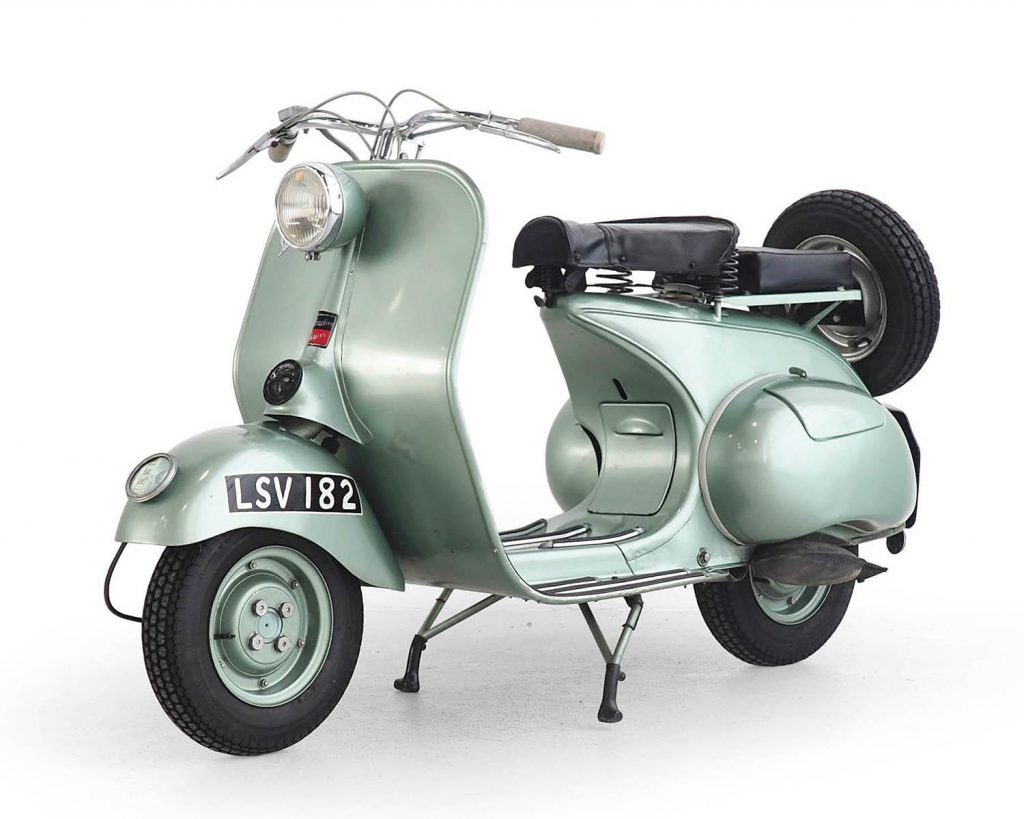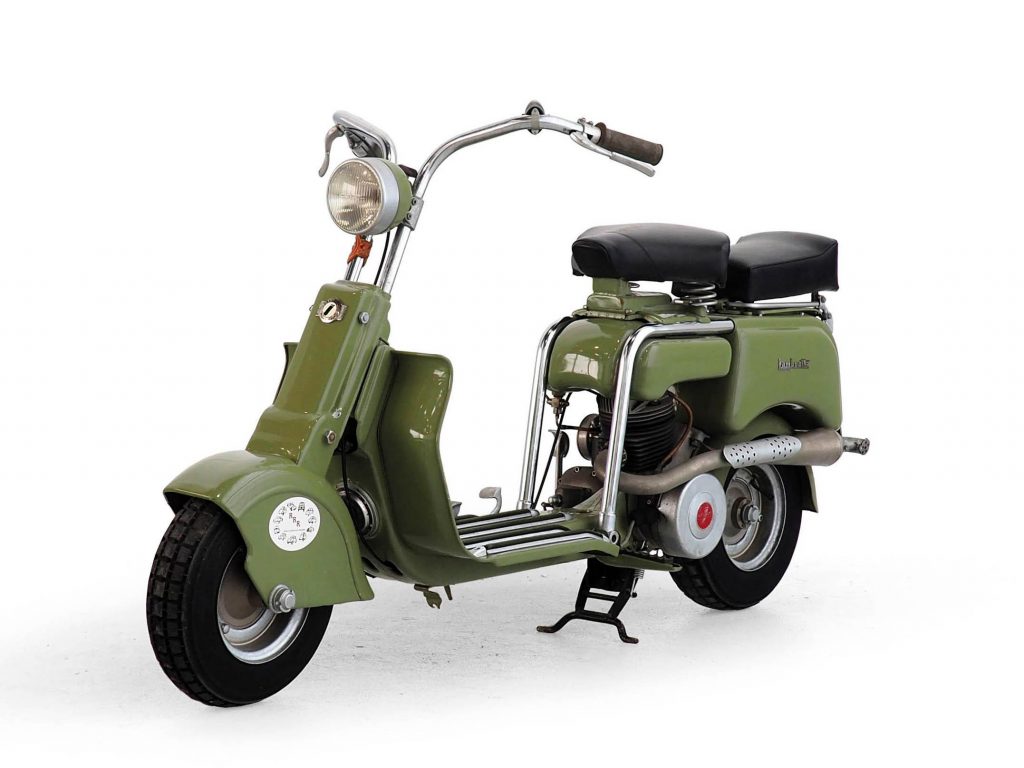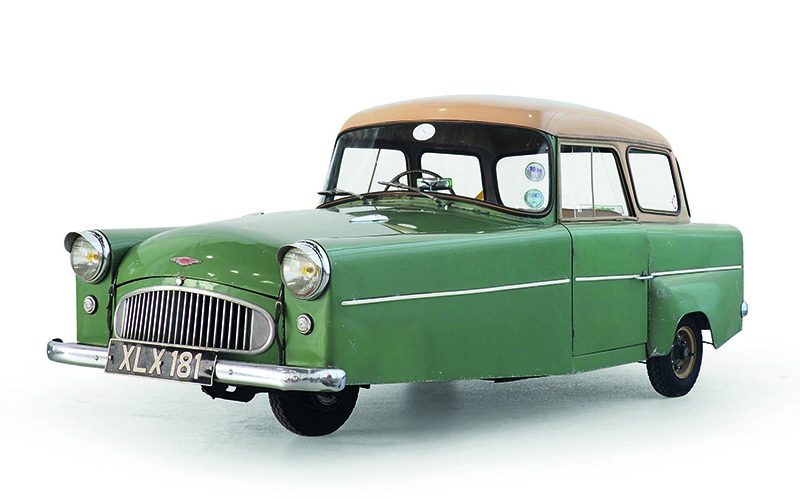
A RARE FRIENDSHIP ON WHEELS
The “RRR Collection” comprises the story of two childhood friends and their lifelong fascination with the fanciful and highly affordable vehicles that revolutionised transportation in post-war Europe. The three Rs stand for “Roller”, „Roller-mobile”, “Raritäten” – Motorscooters, microcars, rarities. The collection, which comprises 130 models with exotic names such as Peel, Scootacar, Megu and Colibri, will be sold at auction at Dorotheum’s July 2020, Classic Car sale.
The post-war years were marked, above all, by deprivation. The automobile – on the brink of its big breakthrough in the 1930s – remained an unattainable dream for most Europeans in the depressed years that followed WWII. Some could afford motorcycles, most people however, not even that. But something was brewing south of the Alps. A new distinct buzzing sound was conquering the streets of Italy and from there it spread like wildfire in all directions. Vespa, “The Wasp”, had been born. With the emergence of the World’s first successful commercial motor scooter, a whole generation had its first real taste of the freedom of mobility. Around the same time, as this new and affordable means of transportation was catching on across the continent, professional motor racing also re-emerged after years of hibernation, because, well, it’s in our human nature to compete.
a great race
And what the great racing drivers could do on the track, the youngsters would eagerly attempt to match on their scooters. Among them were two Viennese childhood friends. One drove a Lohner, the other a Puch, and they spared neither themselves nor their machines in the quest to find more speed and greater thrills. Youthful recklessness eventually gave way to reason and complacency as it has a way of doing. Scooters were replaced by families and careers; one of the two friends took over the family business, the other became a bank manager. Their daredevil days were over. A time that had peaked with an Austrian Championship victory, seemed to have reached its conclusion. First love dies hard, however. One of the two friends could never give up the scooters entirely. The other did. He spent 15 miserable scooterless years before finally finding his way back to the fold.
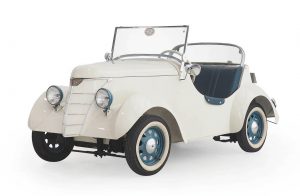
starting to collect
It was the late 1970s by then, and the two friends were roughly halfway through life when they decided to start rolling together again. The scooterless one acquired an Italian Moto Rumi, and that’s how the collection started. The rest, as they say, is history. What began as a passion became their life’s work. It was never dedicated to the fastest, most expensive and most beautiful machines. Their focus was the starter models, the classic first buys of post-war automotive history – the scooters and the bubble cars, all of which have come to be regarded as rarities today. These vehicles served their purpose proudly in all corners of the world until prosperity eventually caught up with them and they were mercilessly retired. Volkswagen’s affordable four-wheeler was the arch-enemy, and in the end they disappeared as fast as they had appeared. All but the few surviving collectors’ items. Necessity is, as we all know, the mother of invention, and the sheer oddness of some of these quirky vehicles is indeed unparalleled.
Peel, Frisky and Scootacar, Messerschmitt and Vespa
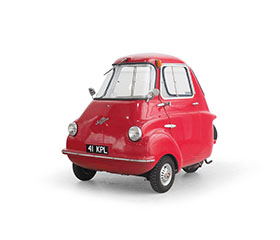
The British models were in a league of their own in this respect. Whether the Peel, the Frisky or the Scootacar, they all look like something that has shrunk in the wash, something that might have been a car but could just as easily have been a UFO. The Germans on the other hand were pragmatic in the extreme. It shows, for example, that Messerschmitt and Heinkel had been aircraft manufacturers before turning to the production of bubble cars. The French were more experienced. They had built similar crates on wheels prior to the war, and the Italians were of course the ones who had shown the world how to do it, starting with the Vespa and the Lambretta on two wheels and the Isetta on three. A few Austrian manufacturers had tried their hand at the game but failed to make a significant mark with their solution to the problem, until the manufacturer Puch stepped up and trumped the opposition with its iconic scooter and the Puch 500. Kauba, Megu and Colibri have all been long forgotten today.
even more than a lifelong friendship
The two friends began to search for, buy and repair as many of the historic scooters and bubble cars as they could get their hands on. The rarest pieces were the most coveted, not however in terms of the value they represented. Originality and authenticity always counted for more. The collection grew steadily and so did the lack of space for it. Their collection surpassed 100 vehicles, then 200. They would sometimes swop against models that were not right for the collection, but they hardly ever went to the market as sellers. And they never ceased to collect. At the turn of the millennium it was finally decided to build a small museum for the collection.
Erich Schenkel did not live to witness the opening of the museum. His daughter, Renate, stepped in to finish what he had begun with Norbert G. Mylius all those years ago. In 2003, Museum RRRollipop opened its doors to the public in the Austrian town of Eggenburg. Now, 16 years later, the doors are set to close for the last time.
and they roll again
Four decades of collecting and seven decades of unfettered passion are coming to an end. As difficult as the farewell may be, it does offer some consolation that the 150 rare scooters and bubble cars that remain, will soon be back on the road where they rightly belong. In July, Schenkel and Mylius’ grandiose and fanciful collection of historic vehicles will perform as a group one last time before heading off to pastures new at Dorotheum’s classic car auction.

